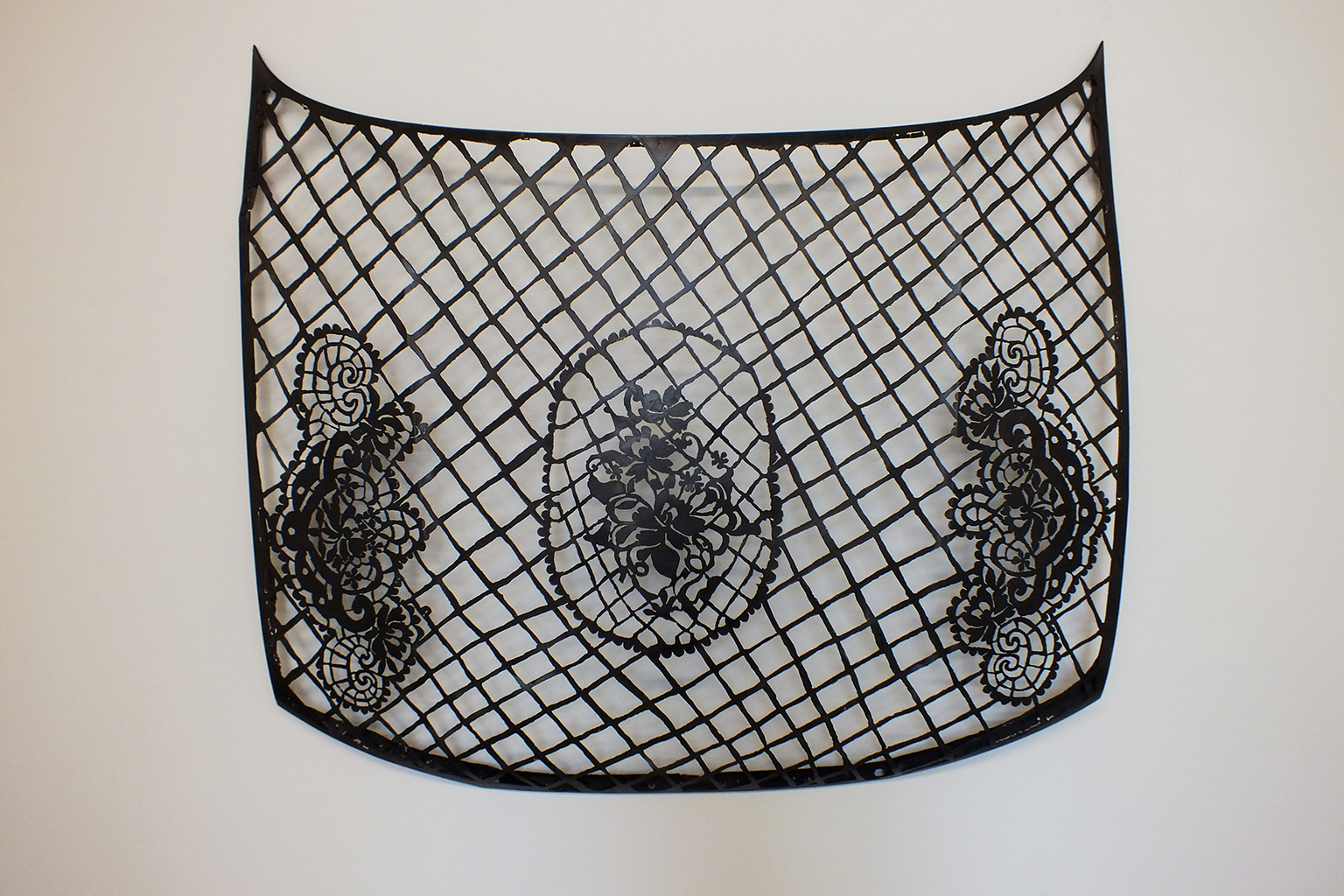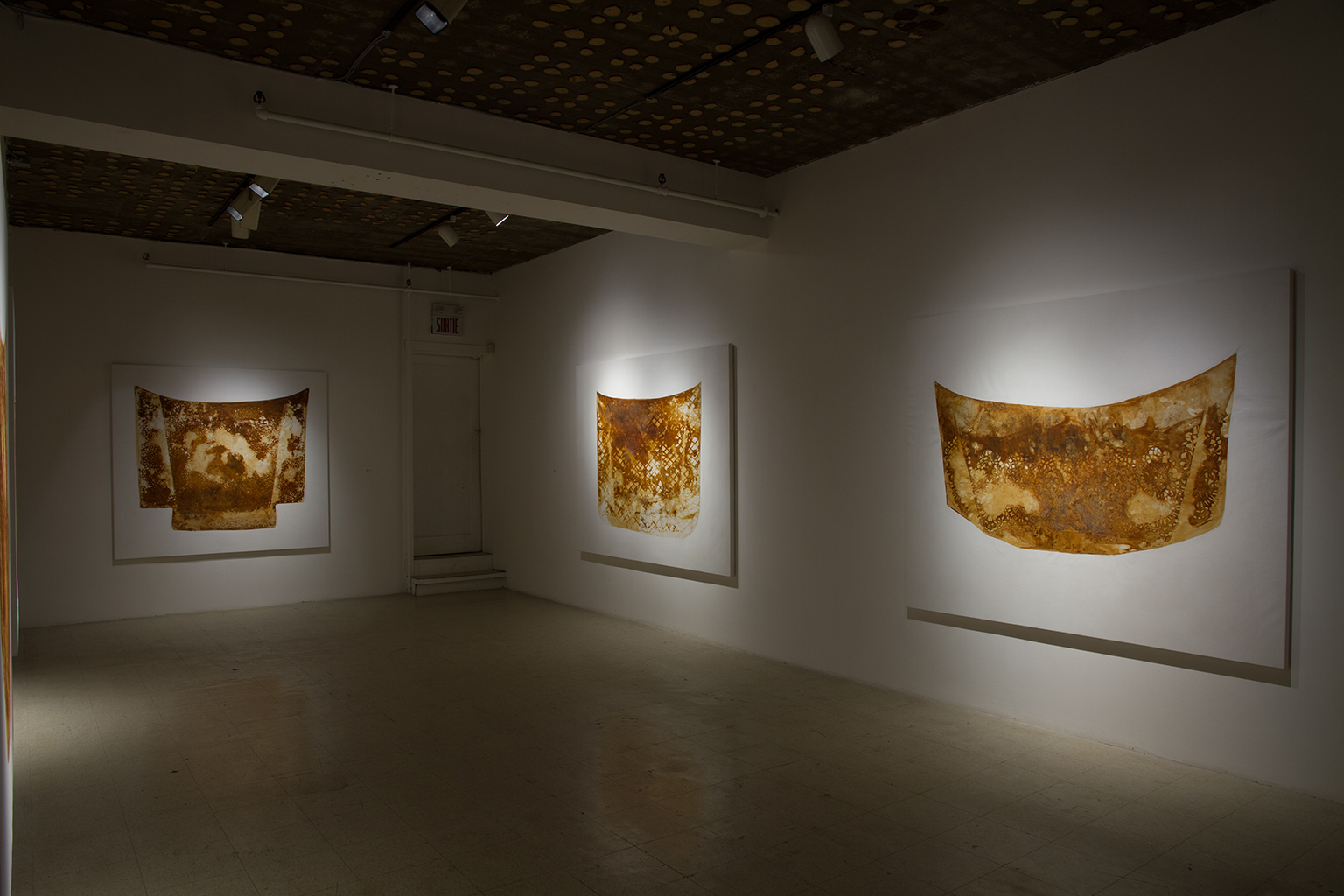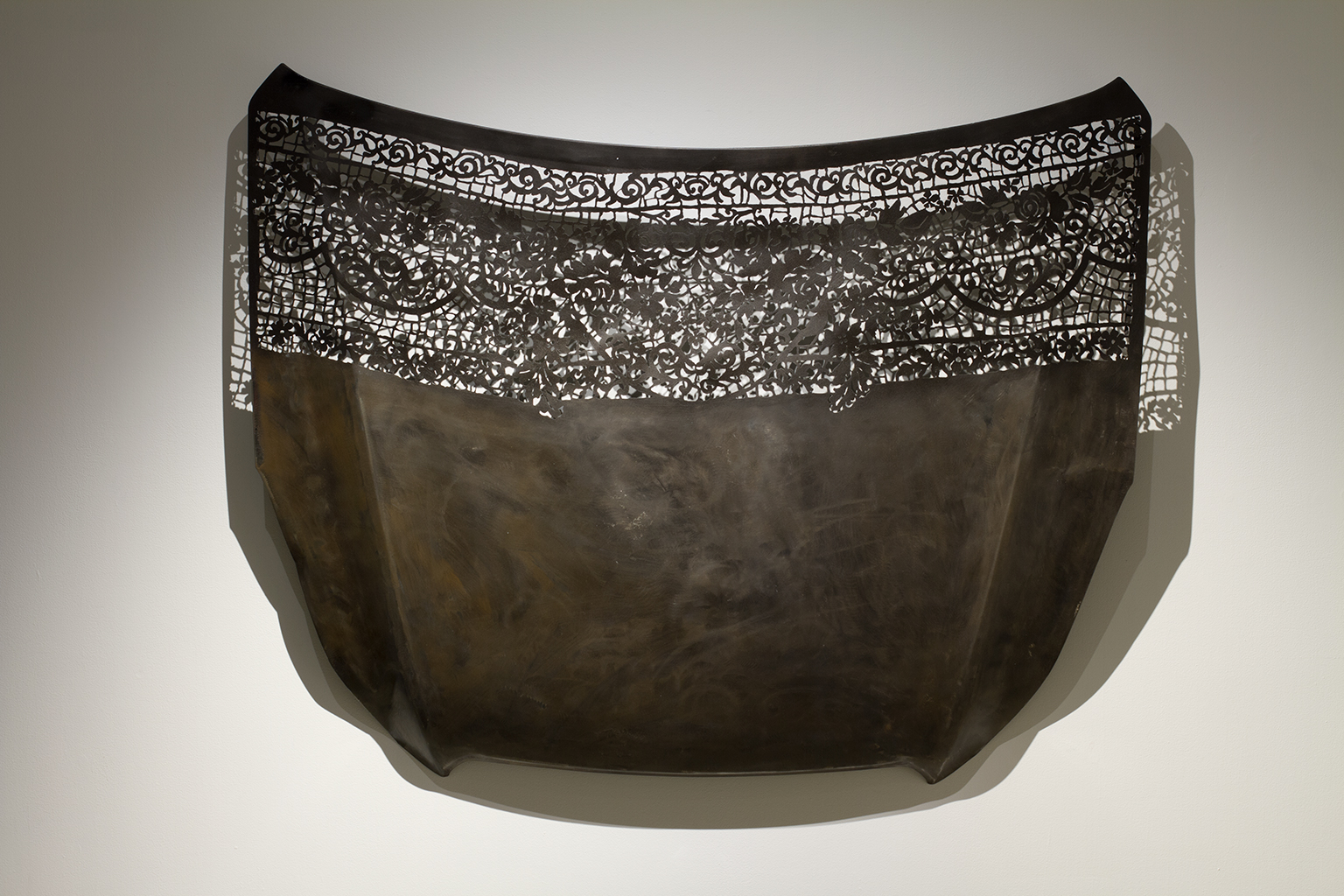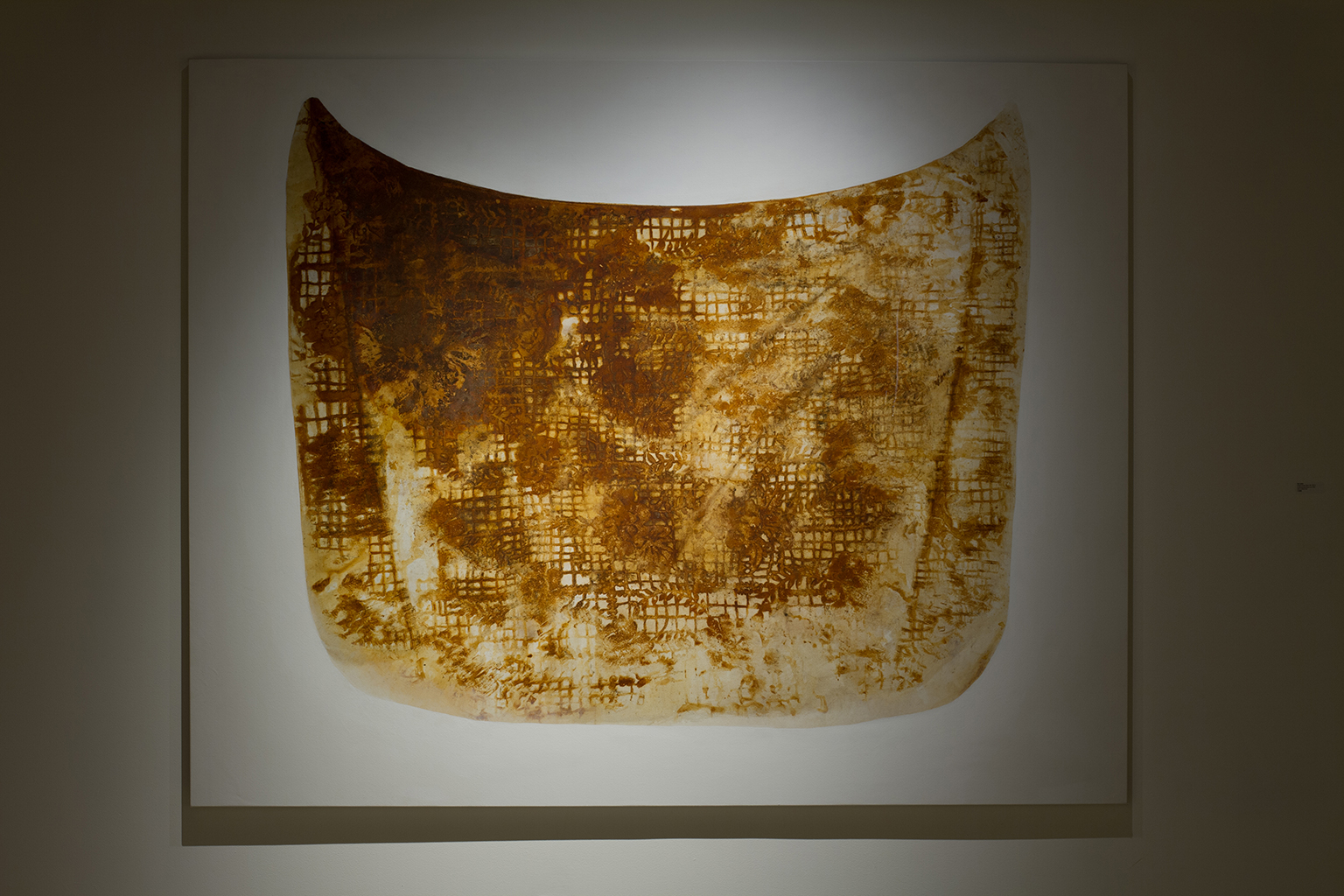Veiled Hoods and Stains
Text by Sophie Lynch
For the exhibition Veiled Hoods and Stains, Cal Lane combines delicate lacework and discarded steel car and truck hoods to create two series of related works. Traditionally used as a symbol of purity to adorn clerical robes, or to evoke fragility and femininity, lace both reveals and conceals. For her Veiled Hoods (2014), Lane uses a plasma cutter as her needle and thread to cut elegant lace patterns in the steel hoods, connecting the history of labour-intensive craft to the mass production of the contemporary automotive industry. Lane’s painstaking process, which transforms readymade objects into captivating sculptures, gives the ornate material strength and durability. Whereas hoods are often designed to cover, hide, or protect, the elaborate motifs on Lane’s structures expose the skeletons hidden underneath the appearance of stability. The intricate lacework that Lane carves into the industrial material uncovers the layers of contradictions inherent to her choice of materials. If hoods can sometimes be threatening, such as the ones worn by those who wish to conceal their identity, Lane’s simultaneously veil and expose to disclose the fragility of the steel structure and the strength of the decorative pattern.
Automobile hoods that are regarded as no longer useful are regularly discarded and end up in scrap yards, left to decay with other unwanted debris. The vulnerability of the material is revealed in corrosion, as a few rain drops may cause the steel to rust. For her Veiled Hood Stains (2014), the meticulous hand craftsmanship associated with lace-making is replaced by an imprint of rust, the often undesirable reaction of steel in the presence of water and oxygen. Lane places the seemingly resistant structures on sheets of canvas for several weeks to allow the hoods to leave their imprints behind, staining the clean material with their reddish-brown residue. It is only upon closer inspection that viewers might notice that what at first appears to be delicate fabric embellished with a decorative pattern is created out of the wear and debris of a steel automobile part that has lost its original purpose. The passage of time–the manufactured object’s past life and Lane’s labour intensive process of cutting the steel to create lace patterns–remains inscribed on the surfaces of the sheets as the hoods deteriorate. In Lane’s work, matter out of place is arranged in a precise order, what is meant to hide also unveils, and a fragile material is rendered as resilient as a steel automobile part.




























